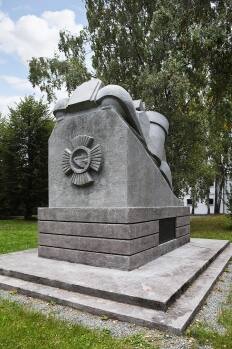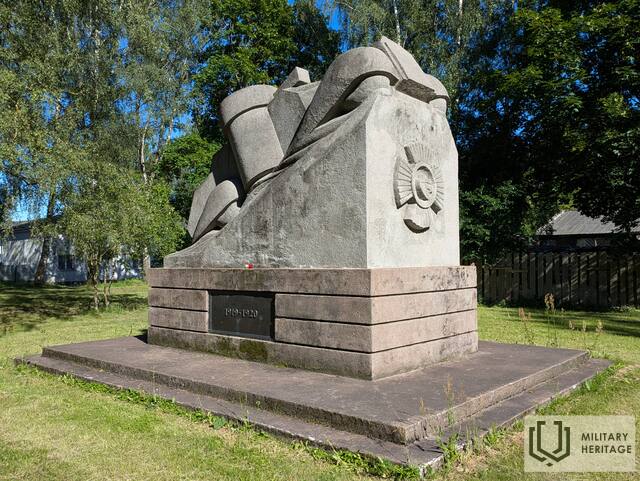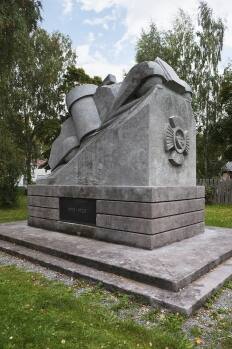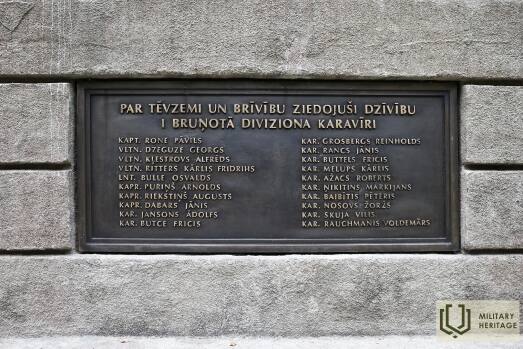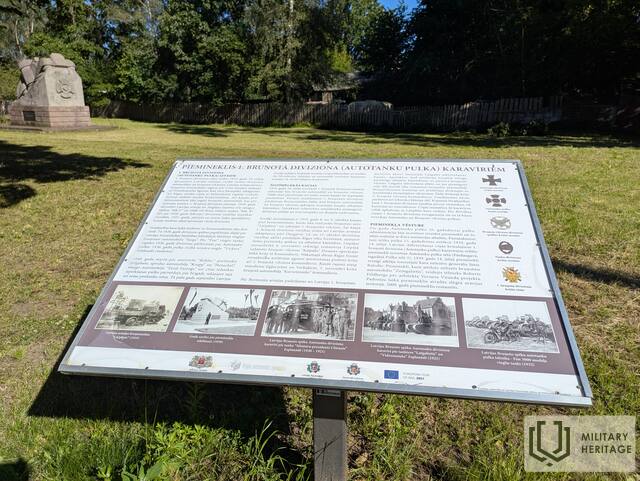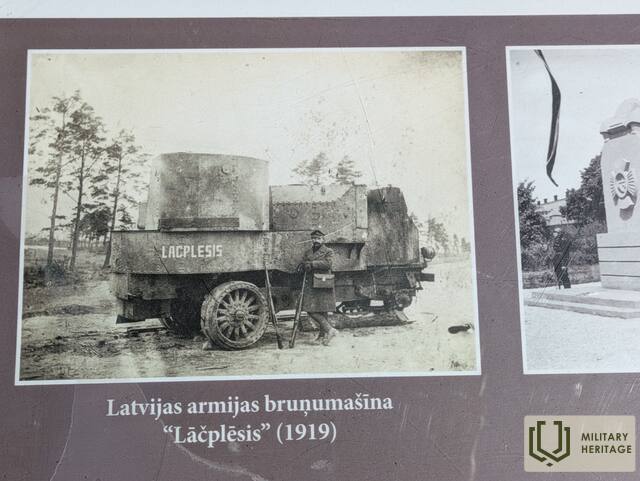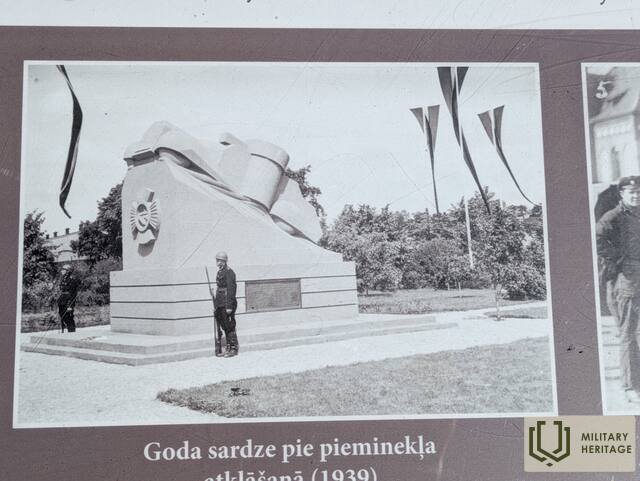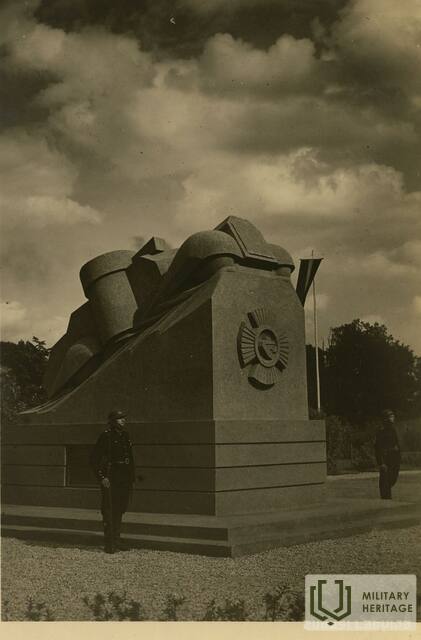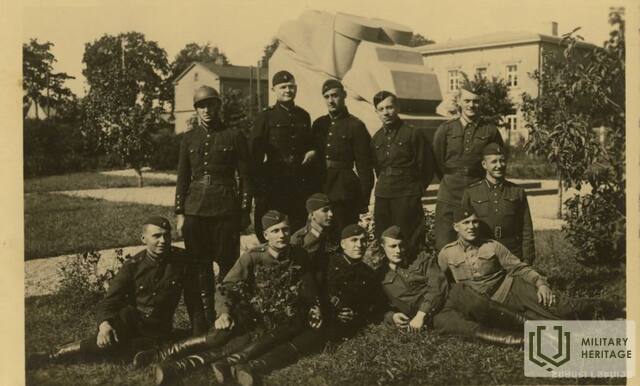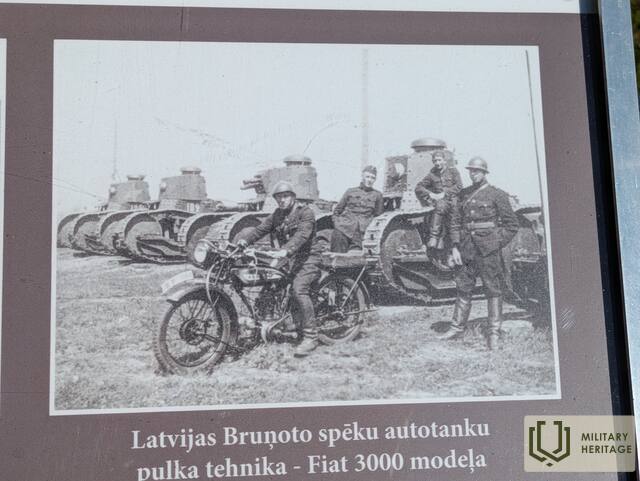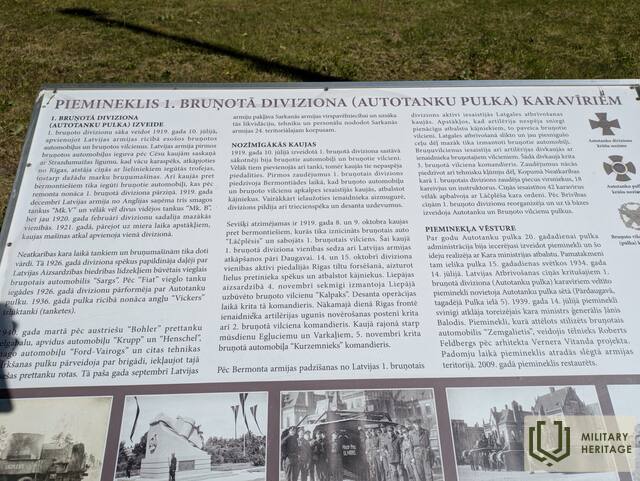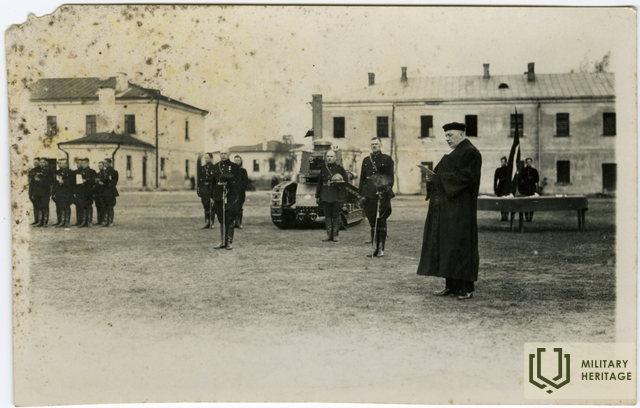Paminklas Latvijos armijos tankų pulko kariams
Memorialinė vieta

Paminklas atidengtas 1939 m., pagerbiant žuvusius Latvijos armijos 1-osios šarvuočių divizijos (vėliau – Tankų pulko) kovotojus. Jame pavaizduotas į kalną skubantis šarvuotas automobilis, o postamento priekyje – dalinio ženklas. Pagamintas Art Deco stiliumi, tai vertingas meno kūrinys, pasakojantis apie Nepriklausomybės karo „geležinius kareivius“.
Šarvuočiai pasižymėjo greičiu (maks. - 60 km/h) ir gebėjimu nustebinti priešininkus, juos slopinant kulkosvaidžiais. Konstruojami ant lengvojo automobilio rėmo su 4 - 8 mm šarvų plokštėmis, ginkluoti kulkosvaidžiais arba mažo kalibro pabūklais. Šaudmenų ir degalų atsargos buvo apskaičiuotos pusvalandžiui nepertraukiamos kovos. Jų žinioje buvo iki 5000 šovinių, iki 30 rankinių granatų ar kitų sprogmenų. Šarvuočiui reikėjo daug degalų, pavyzdžiui, „Lāčplēsis“ 1919 m. lapkritį sunaudojo 1350 l degalų.
Jo įgulą sudarė 3–5 vyrai, kurie atliko pavojingą ir atsakingą užduotį. Įsitaisę kovos mašinose, jie vykdavo priešo link su dideliu kiekiu amunicijos. Dažnai varikliai pervargdavo ir sustodavo. Kovos mašinos ir jų įgulos įkvėpdavo ir suteikdavo vilties dėl pergalės.
Šiandien galite pamatyti paminklą, kuris yra netoli buvusių Latvijos armijos tankų pulko kareivinių.
Panaudoti šaltiniai ir literatūra:
Kalķis, J. Br. Automobilių naudojimas puolimo mūšyje. „Karinė apžvalga“, Nr. 3. 1934 m.
Eserts, M. Geležiniai kareiviai arba Latvijos kovos technikos istorija. 1998.




